Products
On-Demand Videos
video
AI/ML Infra Meetup | Open Source Michelangelo: Uber's Predictive to Generative end to end ML Lifecycle management platform

In this talk, Eric Wang, Senior Staff Software Engineer introduces Uber’s open-source generative end-to-end ML lifecycle management platform: Michelangelo.
video
AI/ML Infra Meetup | Unlock the Future of Generative AI: TorchTitan's Latest Breakthroughs

In this talk, Jiani Wang, Software Engineer Meta's Pytorch Team, dives into the overview and the latest advancements in TorchTitan.
video
AI/ML Infra Meetup | Bringing Data to GPUs Anywhere + Get Low-Latency on Object Store with Alluxio

In this talk, Bin Fan, VP of Technology at Alluxio, explores how to enable efficient data access across distributed GPU infrastructure, achieving low-latency performance for feature stores and RAG workloads.
.png)
Thank you! Your submission has been received!
Oops! Something went wrong while submitting the form.
video
AI/ML Infra Meetup | Open Source Michelangelo: Uber's Predictive to Generative end to end ML Lifecycle management platform

In this talk, Eric Wang, Senior Staff Software Engineer introduces Uber’s open-source generative end-to-end ML lifecycle management platform: Michelangelo.
No items found.
video
AI/ML Infra Meetup | Unlock the Future of Generative AI: TorchTitan's Latest Breakthroughs

In this talk, Jiani Wang, Software Engineer Meta's Pytorch Team, dives into the overview and the latest advancements in TorchTitan.
No items found.
video
AI/ML Infra Meetup | Bringing Data to GPUs Anywhere + Get Low-Latency on Object Store with Alluxio

In this talk, Bin Fan, VP of Technology at Alluxio, explores how to enable efficient data access across distributed GPU infrastructure, achieving low-latency performance for feature stores and RAG workloads.
GPU Acceleration
Model Training Acceleration
Cloud Cost Savings
Hybrid Multi-Cloud
video
AI/ML Infra Meetup | SkyPilot: Open-source System to Scale AI across Clusters, Hyperscalers, and Neoclouds
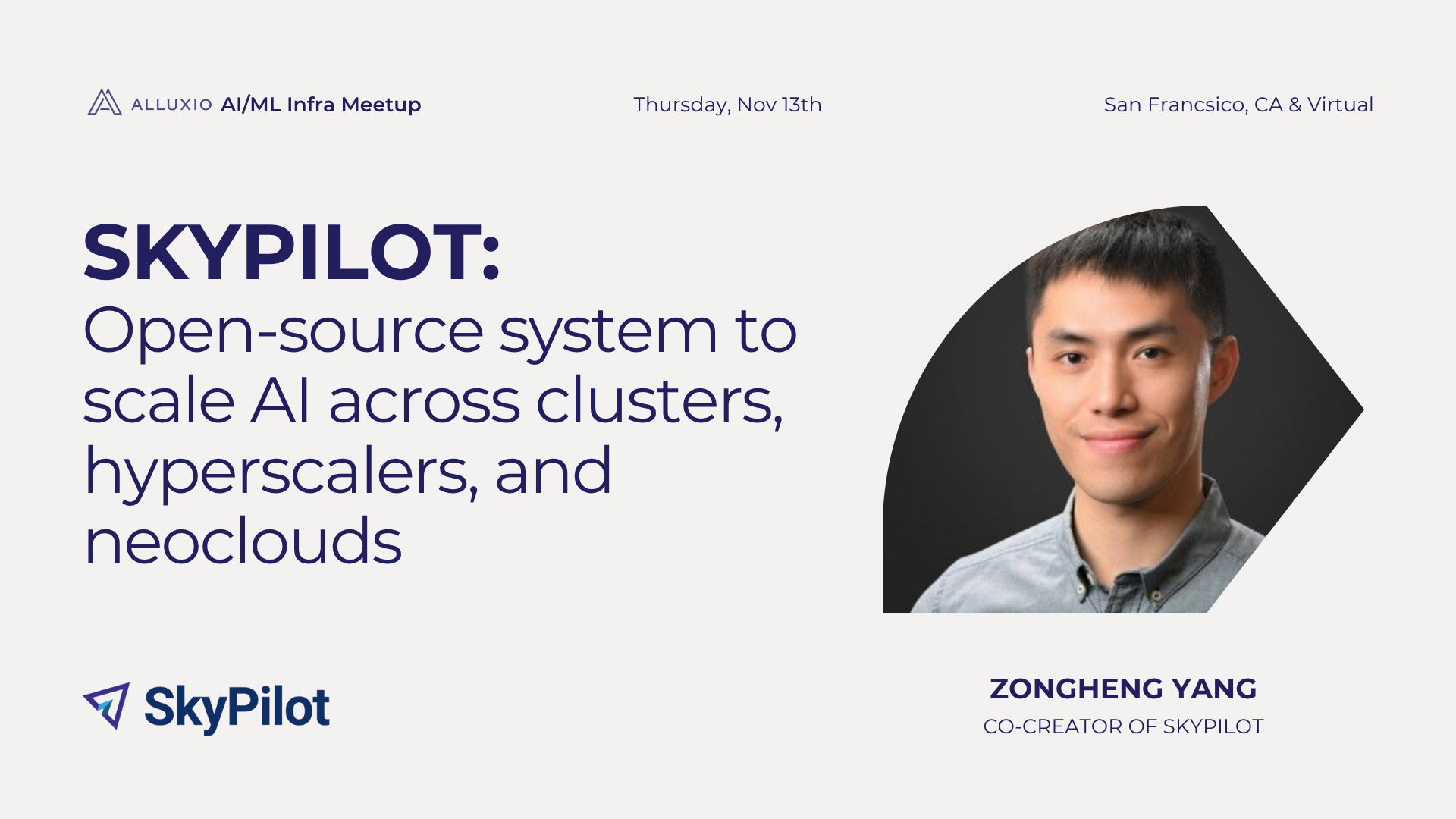
Hear from Zongheng Yang, Co-Creator of SkyPilot, as he explores how to simplify AI deployment across clouds and on-premises infrastructure with automated resource provisioning and cost optimization.
Cloud Cost Savings
video
Bridging Speed and Scale: AWS S3 Data Caching for Low-Latency, Semantically-Rich AI Workloads
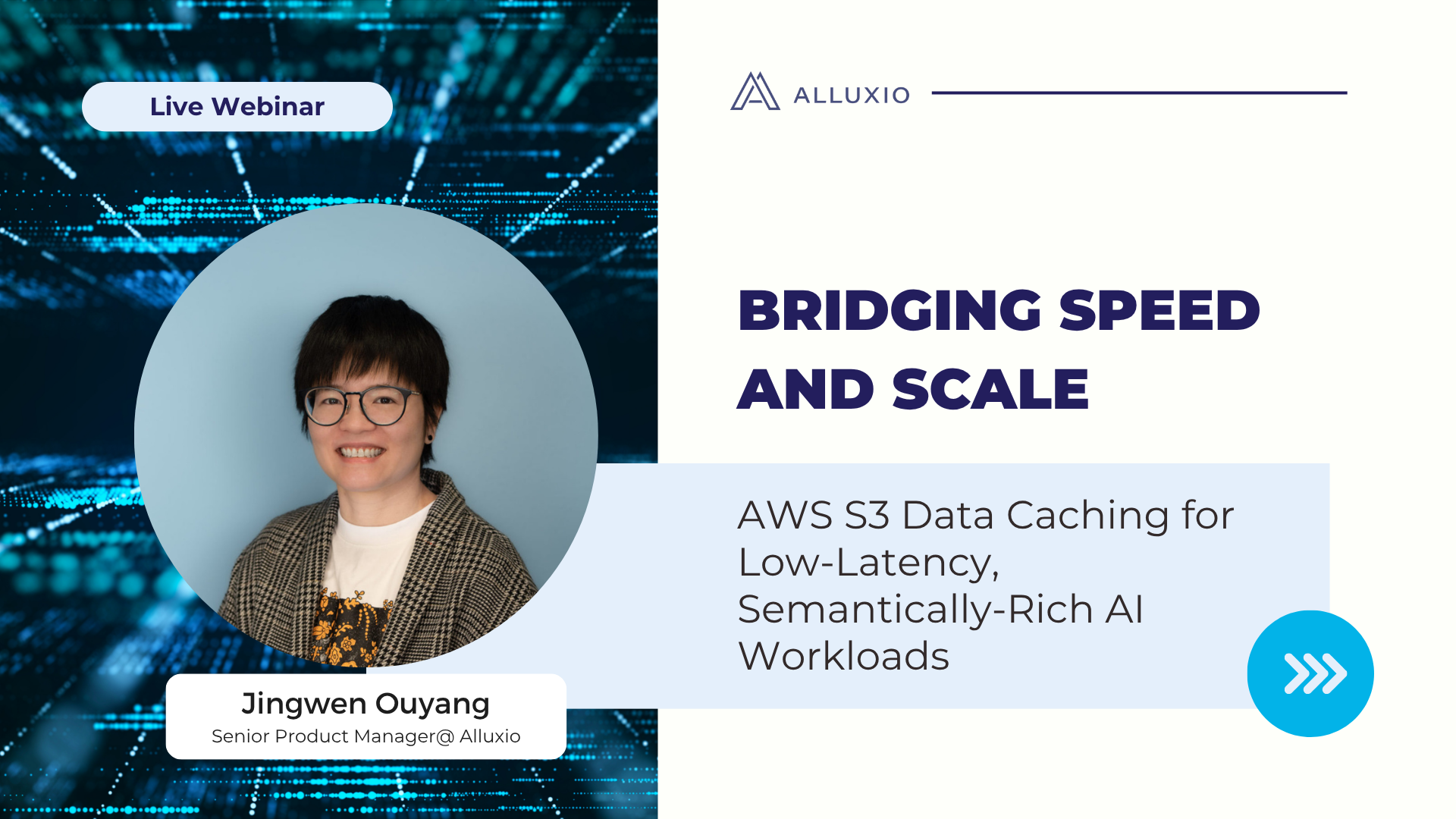
Amazon S3 and other cloud object stores have become the de facto storage system for organizations large and small. And it’s no wonder why. Cloud object stores deliver unprecedented flexibility with unlimited capacity that scales on demand and ensures data durability out-of-the-box at unbeatable prices.
Yet as workloads shift toward real-time AI, inference, feature stores, and agentic memory systems, S3’s latency and limited semantics begin to show their limits. In this webinar, you’ll learn how to augment — rather than replace — S3 with a tiered architecture that restores sub-millisecond performance, richer semantics, and high throughput — all while preserving S3’s advantages of low-cost capacity, durability, and operational simplicity.
We’ll walk through:
- The key challenges posed by latency-sensitive, semantically rich workloads (e.g. feature stores, RAG pipelines, write-ahead logs)
- Why “just upgrading storage” isn’t sufficient — the bottlenecks in metadata, object access latency, and write semantics
- How Alluxio transparently layers on top of S3 to provide ultra-low latency caching, append semantics, and zero data migration with both FSx-style POSIX access and S3 API access
- Real-world results: achieving sub-ms TTFB, 90%+ GPU utilization in ML training, 80X faster feature store query response times, and dramatic cost savings from reduced S3 operations
- Trade-offs, deployment patterns, and best practices for integrating this tiered approach in your AI/analytics stack
GPU Acceleration
video
AI/ML Infra Meetup | AI at scale Architecting Scalable, Deployable and Resilient Infrastructure
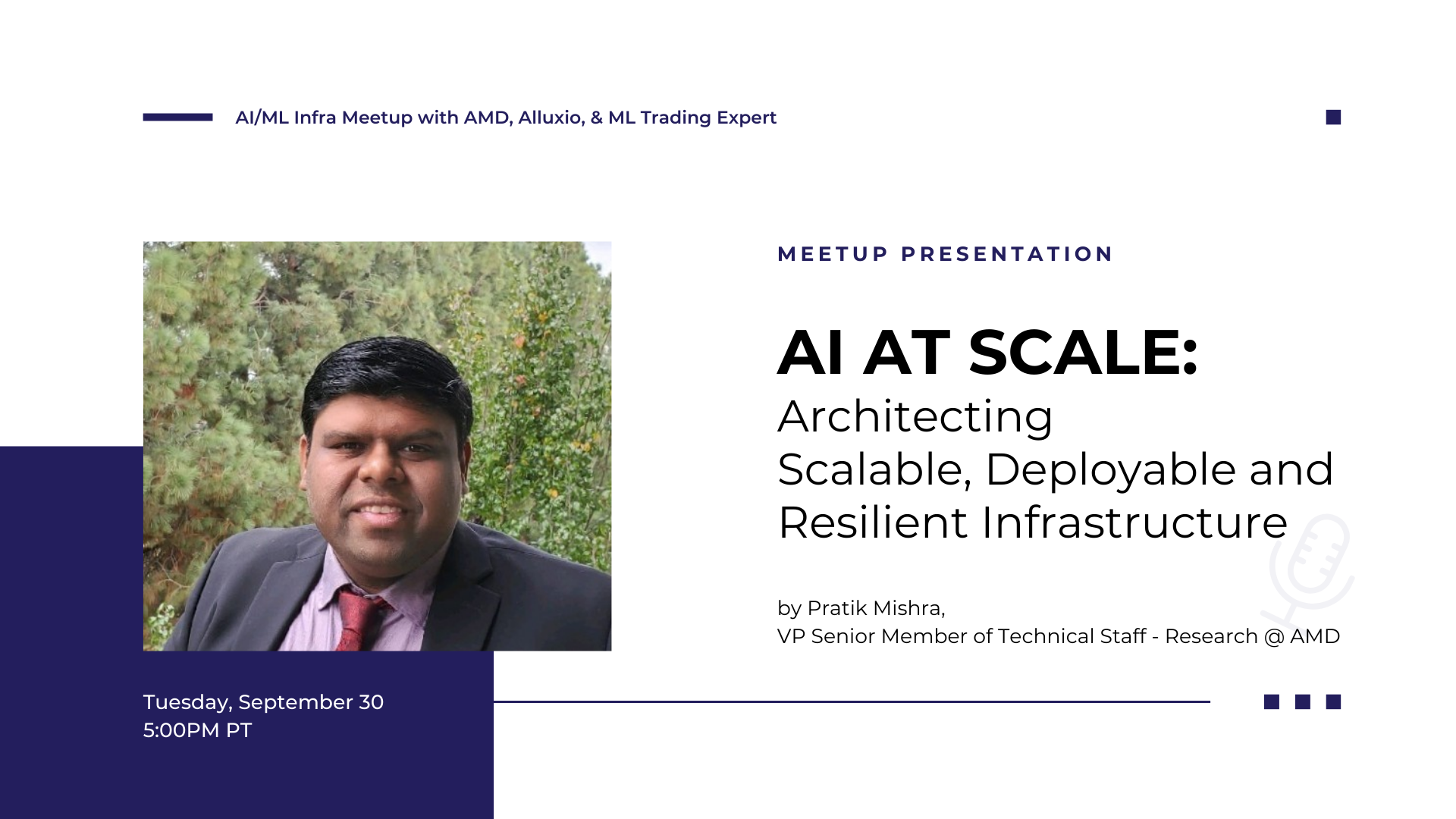
In this session, Pratik Mishra delivers insights on architecting scalable, deployable, and resilient AI infrastructure at scale. His discussion on fault tolerance, checkpoint optimization, and the democratization of AI compute through AMD's open ecosystem resonated strongly with the challenges teams face in production ML deployments.
No items found.
video
AI/ML Infra Meetup | Alluxio + S3 A Tiered Architecture for Latency-Critical, Semantically-Rich Workloads
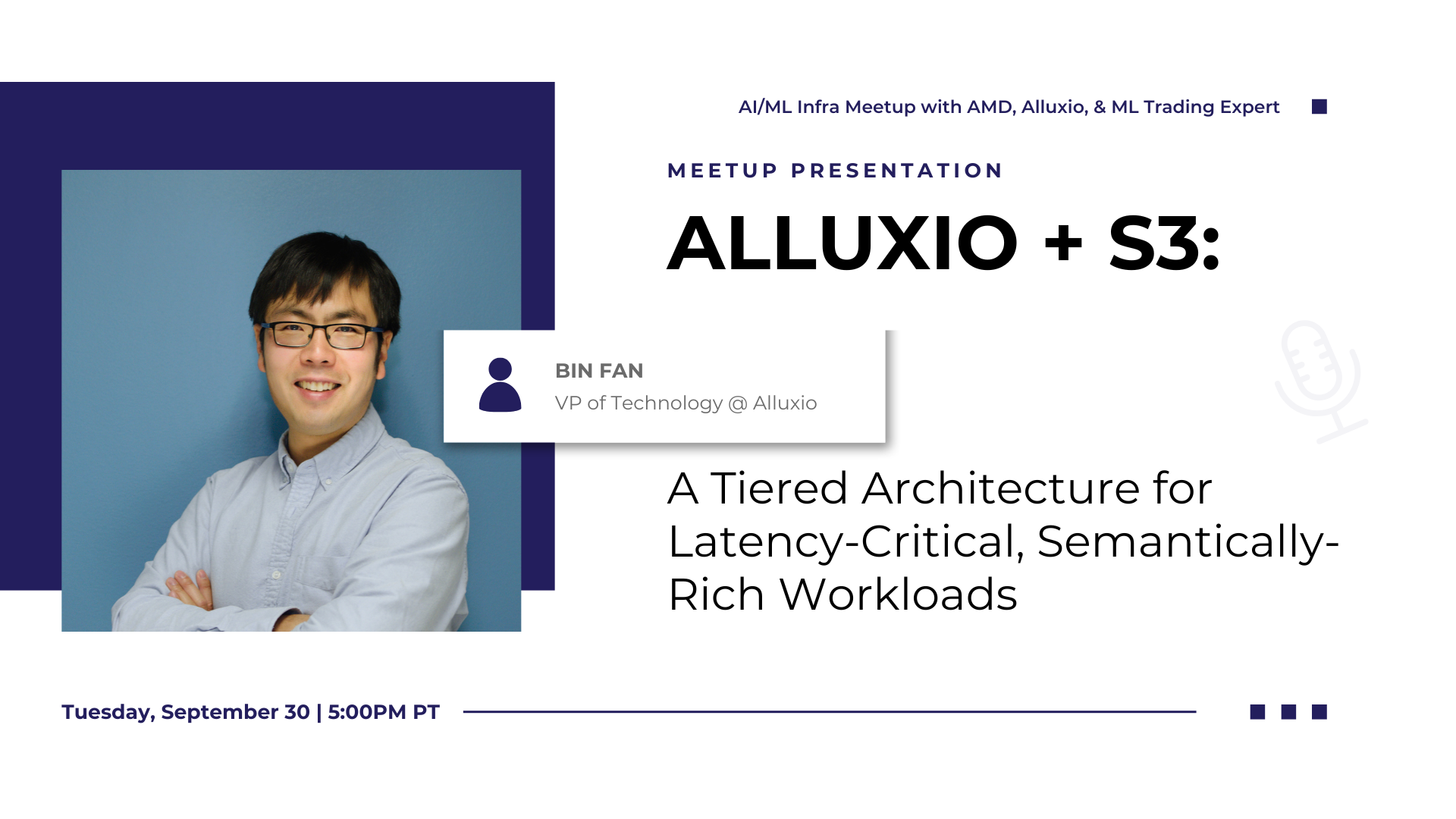
In this talk, Bin Fan, VP of Technology at Alluxio, presents on building tiered architectures that bring sub-millisecond latency to S3-based workloads. The comparison showing Alluxio's 45x performance improvement over S3 Standard and 5x over S3 Express One Zone demonstrated the critical role the performance & caching layer plays in modern AI infrastructure.
GPU Acceleration
Cloud Cost Savings
Model Training Acceleration
video
AI/ML Infra Meetup | Achieving Double-Digit Millisecond Offline Feature Stores with Alluxio
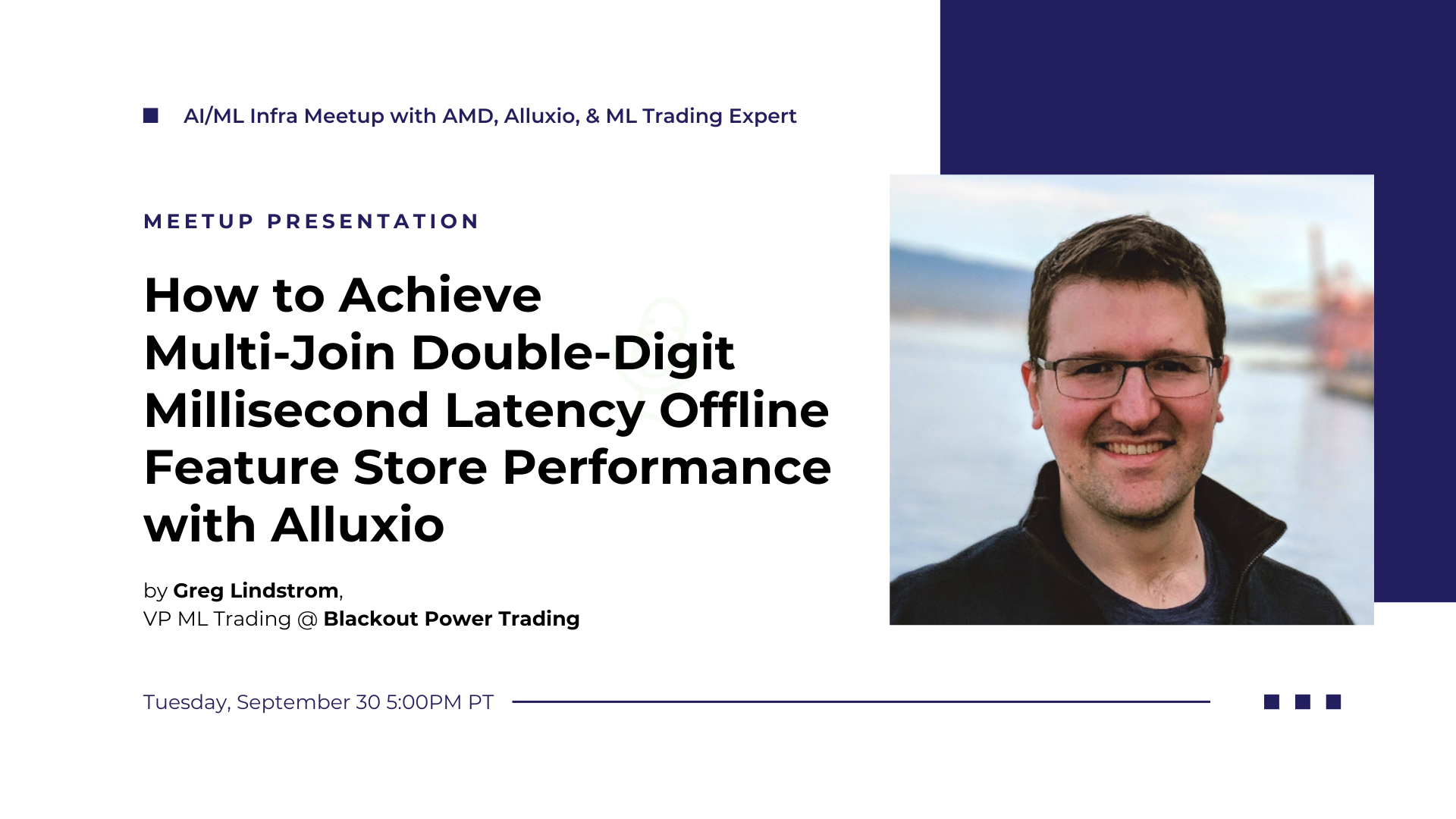
In this talk, Greg Lindstrom shared how Blackout Power Trading achieved double-digit millisecond offline feature store performance using Alluxio, a game-changer for real-time power trading where every millisecond counts. The 60x latency reduction for inference queries was particularly impressive.
Cloud Cost Savings
Hybrid Multi-Cloud
Large Scale Analytics Acceleration
video
AI/ML Infra Meetup | Building AI Applications on Zoom
In this talk, Ojus Save walks you through a demo of how to build AI applications on Zoom. This demo shows you an AI agent that receives transcript data from RTMS and then decides if it has to create action items based on the transcripts that are received.
No items found.
video
AI/ML Infra Meetup | Accelerating the Data Path to the GPU for AI and Beyond
In this talk, Sandeep Joshi, , Senior Manager at NVIDIA, shares how to accelerate the data access between GPU and storage for AI. Sandeep will dive into two options: CPU- initiated GPUDirect Storage and GPU-initiated SCADA.
GPU Acceleration
video
AI/ML Infra Meetup | Beyond S3's Basics: Architecting for AI-Native Data Access
Bin Fan, VP of Technology at Alluxio, introduces how Alluxio, a software layer transparently sits between application and S3 (or other object stores), provides sub-ms time to first byte (TTFB) solution, with up to 45x lower latency.
GPU Acceleration
Model Distribution
Model Training Acceleration
Cloud Cost Savings
video
AI/ML Infra Meetup | LLM Agents and Implementation Challenges
In this talk, Pritish Udgata from Adobe provides a comprehensive overview of implementation challenges and solutions for LLM agents.
Topic include:
- CoT vs RAG vs Agentic AI
- Anatomy of an agent
- Single Agent with MCP
- Multi Agents with A2A
- Implementation Challenges and Solutions
No items found.
